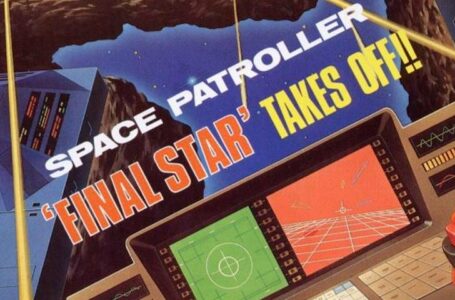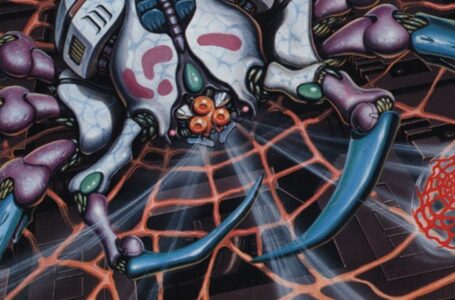Metal Black is a bleak, atmospheric shoot ’em up
One of the things I really appreciate about Hamster’s ongoing Arcade Archives series is that as well as releasing the all-time classics that everyone’s heard of, there’s also a string of lesser-known titles available, too — and some of them really do not deserve to be forgotten. This week’s release, Metal Black from Taito, is one such example.
Metal Black was originally released in 1991, and went through a few iterations during development. It was initially intended to be the third entry in the Darius series (inexplicably internally named “Darius Part 22”) and was then subsequently retooled into a quasi-follow-up to 1990’s Gun Frontier. I say “quasi-” because the two games actually have very little to do with one another, but Metal Black does still start up displaying its codename “Project Gun Frontier 2”.
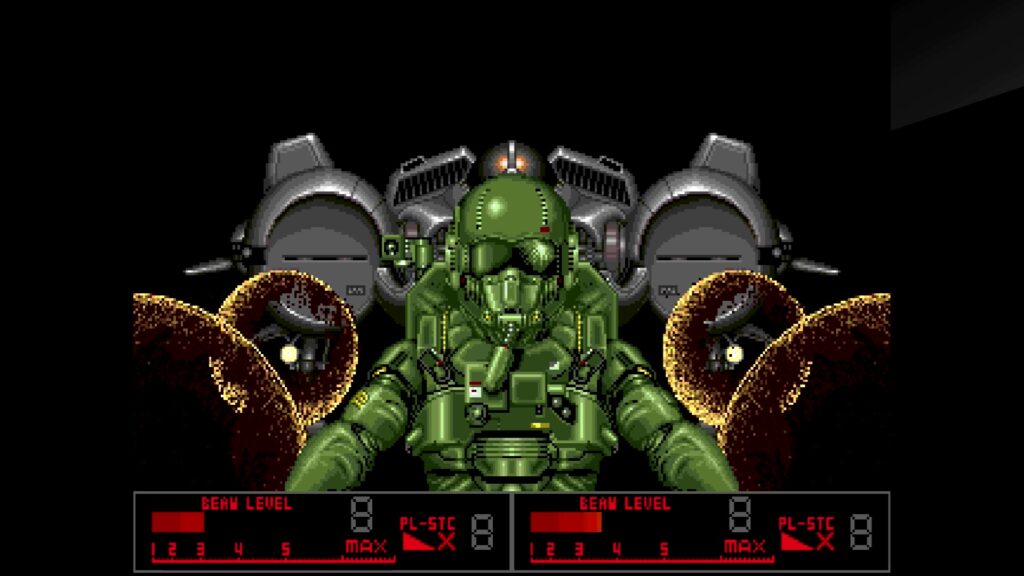
Although there are definitely elements in common with Darius — most notably the horrifying biomechanical enemies throughout the game, many of which look like they’ve drawn inspiration from things lurking at the bottom of the ocean — Taito felt that Metal Black’s atmosphere was much darker than the main Darius series, and thus decided to make it a new original property. This is saying something, because Darius can get pretty bleak at times, particularly with the moody soundtracks from Taito’s house band Zuntata!
Metal Black has had a few home ports over the years, including a Japan-only Saturn version in 1996 and a release for Windows PC, PlayStation 2 and Xbox as part of the Taito Legends 2 compilation in 2006. It’s also included on the Taito Egret 2 mini console. It remains a game that isn’t especially well-known, however, and has had a somewhat mixed reception over the years — though Hiroyuki Maruyama of G.rev noted that Metal Black was a strong influence on Border Down, even going so far as to sneak a few references in there.
In Metal Black, you take on the role of John Ford, a rogue pilot who objects to the government of a ruined Earth attempting to pass a treaty with the evil Nemesis forces. Commandeering one of the new experimental CF-345 Black Fly fighters, which are designed to make use of the “Newalone” molecules that power the Nemesis weaponry, Ford sets out to strike back against Nemesis and save the remnants of humanity.
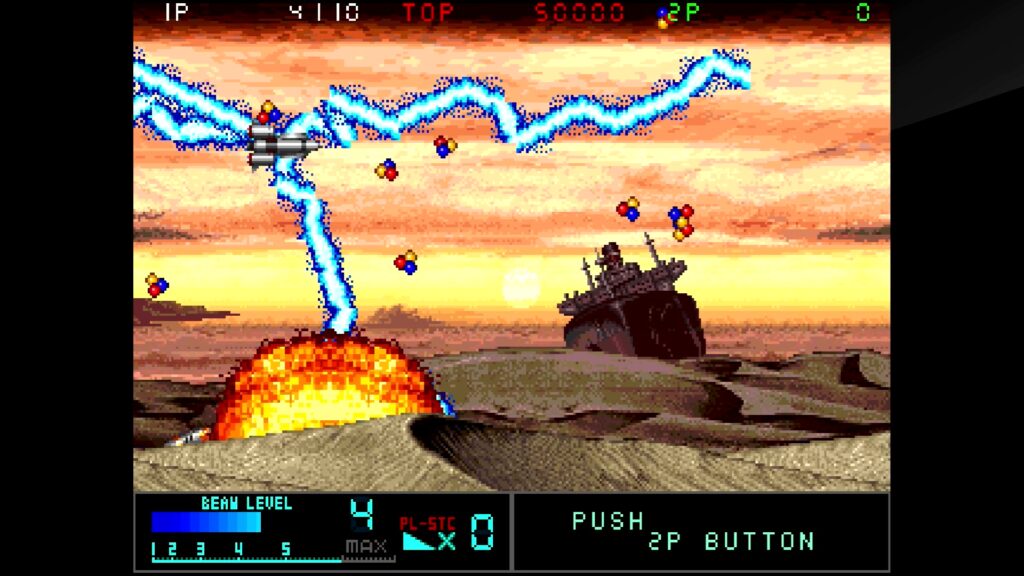
There’s actually some surprisingly elaborate lore to Metal Black, delivered both through a broken English intro and some supplementary materials, and this is a contributing factor to the game’s wonderfully bleak atmosphere. This is not one of those shoot ’em ups that feels like triumphantly striking back at those who have wronged us; this is a desperate fight for survival by a man who is very much on the edge.
Indeed, the game makes a strong effort at environmental storytelling through the spectacular backdrops to the levels. The opening stage sees you emerging from a shelter to reveal the ravaged surface of the Earth, for example, and as you progress you proceed from the Earth’s orbit and onwards into the solar system towards Nemesis’ origin point somewhere around Jupiter.
Mechanically, the game has some very interesting elements. Your ship is equipped with a standard rapid-fire shot that can be upgraded by grabbing the Newalone particles that litter each stage, but the star of the show is your beam weapon. This takes the place of bombs in other shoot ’em ups, but it’s more than just a weapon to get you out of danger — it’s integral to success.
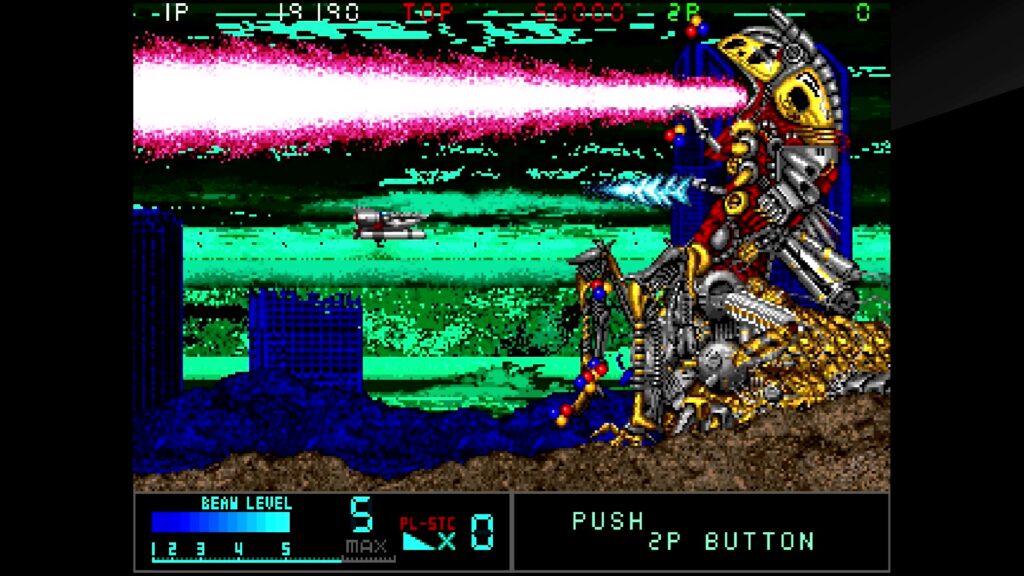
Upon hitting the beam button, the Black Fly will unleash a powerful beam blast according to how high the power meter was when you set it off. At its maximum level, it can send out tendrils of beam all around itself; as the power gradually declines back to minimum, this is replaced by a forward-firing beam that cuts through everything on screen and does devastating damage to bosses.
A particularly interesting aspect of this which the game doesn’t make immediately clear is the “Beam Duel” system. Boss enemies collect Newalone particles just like you do, and thus they are also able to unleash beam attacks. If you set off your beam at the same time as a boss, you can engage in a Beam Duel with them, in which tapping the fire button rapidly keeps your opponent at bay as well as potentially dealing heavy damage if you can successfully overpower them. It’s a really interesting mechanic — just a bit of a shame the game itself doesn’t explain it better.
A couple of times throughout the game, there are bonus stages which unfold from a quasi-3D perspective, using scaling sprites and impressive parallax effects to create a sense of dynamic camera angles. During these sequences, you move a cursor around the screen to lock on to enemies and fire off homing missiles — the more you hit, the more you score.
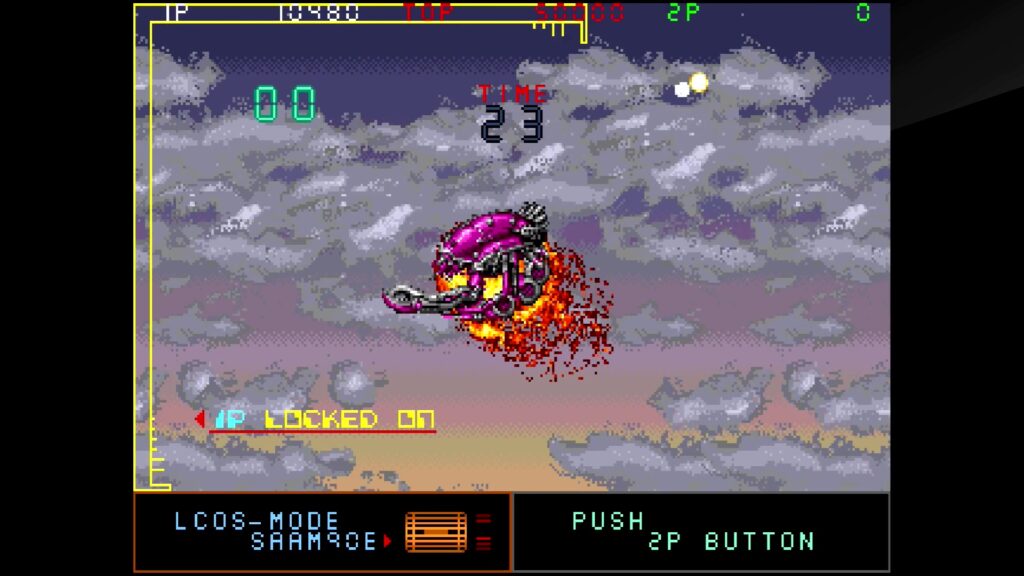
In fact, all of Metal Black is stunning to look at. The backgrounds are beautiful and tell a wordless story as you progress through them. The boss enemies are wonderfully grotesque creations. And a variety of special effects complement the art, really adding to the game’s very distinctive sense of atmosphere.
This is all helped along by an excellent soundtrack from Yasuhisa Watanabe, too. Originally a keyboardist for Zuntata, Watanabe went on to do a lot of work for Capcom, including contributions to Street Fighter EX2 Plus and EX3 along with the Street Fighter Tribute Album. Watanabe’s soundtrack for Metal Black is somewhat cinematic, featuring a range of emotional peaks and troughs as you progress and, once again, really emphasising the fact that this game was created with a desire to tell a wordless, atmospheric story.
So why has Metal Black had such a middling reception over the years? I suspect some of it is down to the difficulty factor, because this is a hard game, even by shoot ’em up standards. The boss fights in particular are very challenging, and if you attempt to defeat them simply using your standard shot, you’re not going to get very far. The beam system is fun and satisfying, but not explained very well to newcomers, and as such I can see how it would be easy for some players to come into this game feeling like it’s full of bullet-sponge enemies that aren’t very fun to contend with.
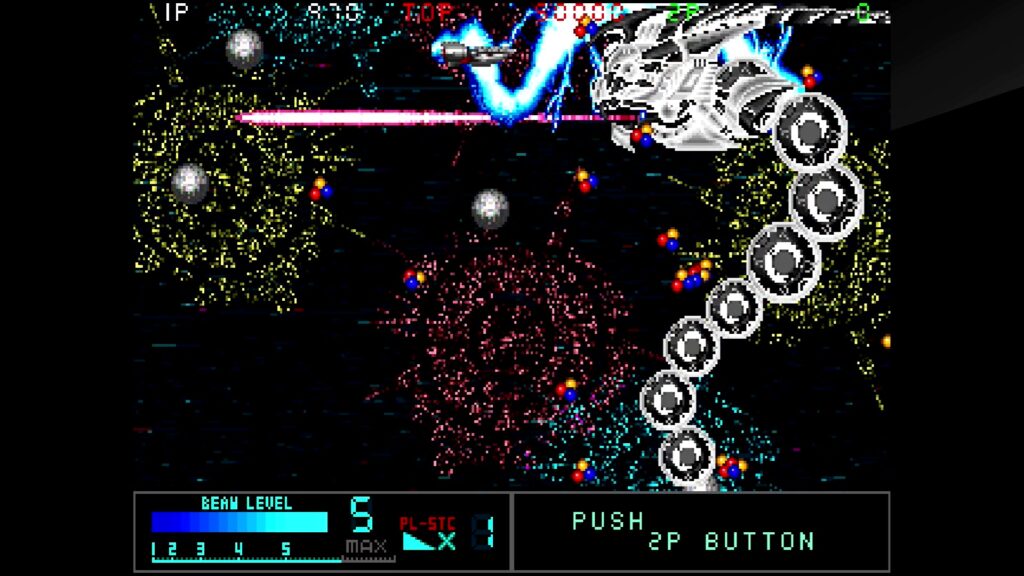
But, aside from the lack of in-game explanation, this isn’t necessarily a failing of the game itself; it simply requires a bit of an adjustment in attitude from many other shoot ’em ups. Specifically, Metal Black is a game where you cannot be too proud to use your special weapons; the beam is absolutely integral to success. And once you get your head around that, the game is a lot of fun. Still absolutely bastard hard at times, yes — particularly once you get beyond the first couple of stages — but a worthwhile journey to make, and a piece of Taito history that shouldn’t be forgotten.
Metal Black is available now for Nintendo Switch and PS4.
Join The Discussion
Rice Digital Discord
Rice Digital Twitter
Rice Digital Facebook
Or write us a letter for the Rice Digital Friday Letters Page by clicking here!
Disclosure: Some links in this article may be affiliate links, which means we may earn a small commission if you make a purchase after clicking on them. This is at no additional cost to you and helps support Rice Digital!
- Letter from the Editor: passing the torch - June 30, 2023
- Super Woden GP 2 is looking promising - June 30, 2023
- Inti Creates is making a 32 bit-style Love Live action platformer - June 26, 2023






